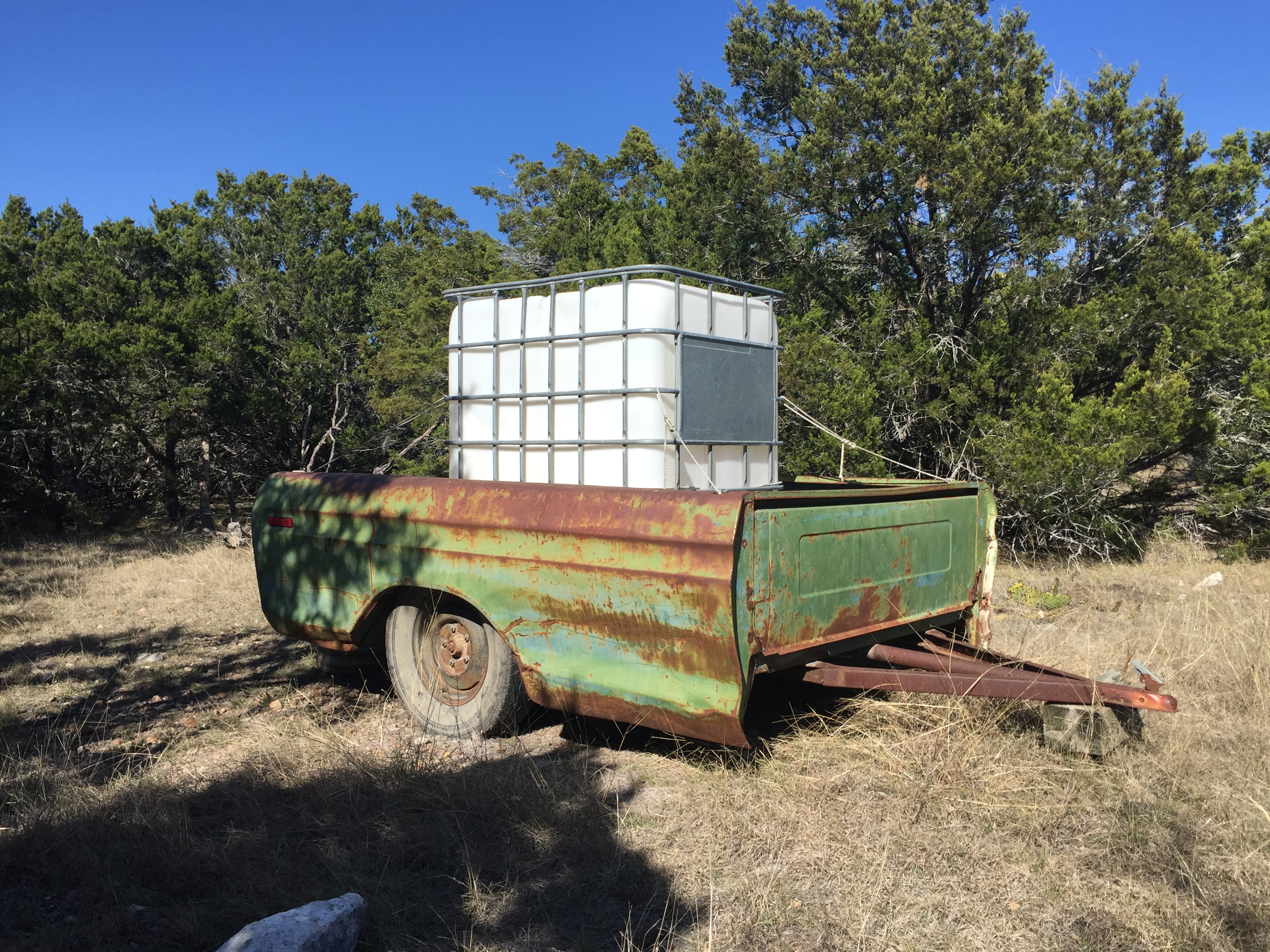As we write this month’s blog, the clouds threaten rain and the burn ban has long been lifted. Trees are budding, wildflowers are on the cusp on blooming, and the grass is greening. On days like this it’s hard to remember the hard times of drought but, Texas being Texas, we know that the dry days will come soon. Lots of them. Which is why now is the time to plan for supplemental water for your wildlife.
Supplemental Water Style
The business of wildlife management allows us to see the natural beauty of Texas land as well as the beautiful mind of its stewards. On a recent site visit, we saw what will now rank as one of our all-time favorite supplemental water “styles” – a truck waterer. An IBC (intermediate bulk container) tank is mounted on a trailer made from a vintage pick-up bed. During dry times when water is needed, the tank is filled and the trailer is towed to its supplemental water location on the property.
This supplemental water style prompted us to check out some other unique looks and methods for providing supplemental water for wildlife. Here are just some of our favorites…
With a blog titled “The.Best.Guzzler.Ever!” you know it’s at least going to be interesting. An adventurous sort stumbled upon a wildlife waterer – or guzzler – located in Joshua Tree Park National Park. A fairly massive water collection system was disguised – quite convincingly so – to look like part of the rocky terrain. The impressive supplemental waster system was set up by the Society for the Conservation of Bighorn Sheep. You can read the entire blog – be forewarned some of the language could be considered “colorful” – and see all of the photos here.
A few years ago the Humane Society Wildlife Land Trust did a fundraiser for a wildlife water guzzler to be installed at Greenwood Preserve in Oregon. The guzzler itself was interesting, set up at the base of a slight incline so that water ran down into the reservoir but, truth be told, it was the photo of a coyote napping in between the reservoir barrels that made it memorable.
At a nature preserve in Portugal, a pond was built with great attention to detail from the small stones surrounding the inset water area to larger stones artistically jutting out of the water for smaller critter accessibility. A photographic diary of wildlife seen at the pond was maintained. From red-legged partridges to an Iberian fox and all manner of creature in between, the pond has proved quite popular. You can see photos of the visitors, plus link to how the pond was constructed here.
Supplemental Water Function
While we very much enjoyed checking out interesting styles of supplemental water, at the end of the day it’s all about the functionality. If you’re not a nature preserve with funding or loads of time or creativity, for that matter, if you’re making it work, we salute you! The following are a few photos from client site visits showing how they make their supplemental water work:
Who needs artistically placed jutting stones when wire and a branch can help little critters get safely out of the water?
It’s no Beverly Hillbillies “cement pond” but creating a concrete water bowl for wildlife is an easy and inexpensive supplemental water solution.
And, finally, we have to give a shout out to our very own wildlife water guzzler which, if we do say so ourselves, combines style and substance.

Photo: Landmarkwildlife.com. Attract and provide water for wildlife while performing a qualifying activity for your Texas wildlife exemption program.















